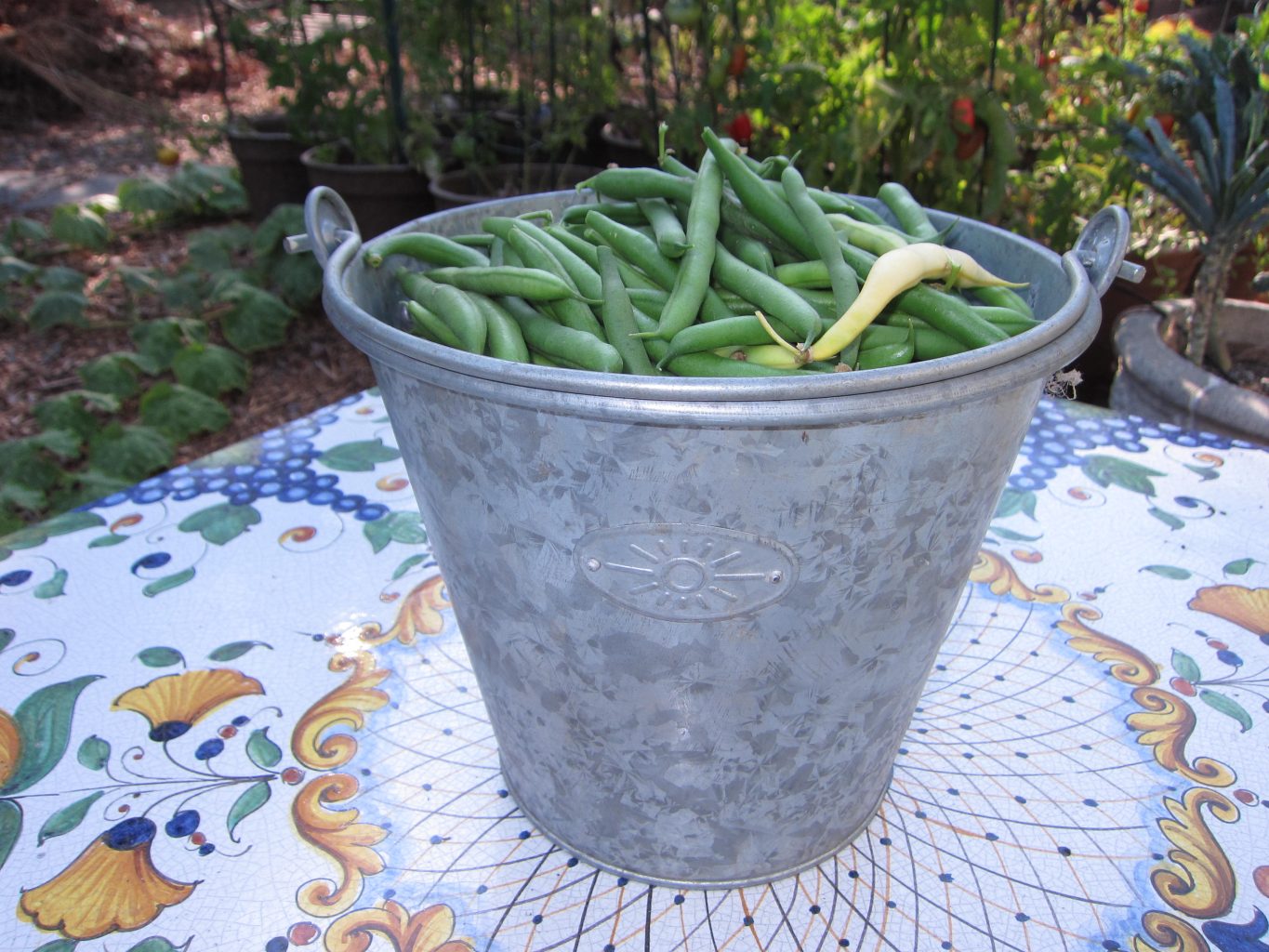It’s a familiar tale for many gardeners – you go away on vacation and return to find your green bean plants have continued producing, leaving you with an abundance of overgrown, fibrous beans. While these mature beans may have missed their prime eating window, there are still plenty of delicious ways to put them to use.
According to the gardening blog Gardenerd, once beans have gone overripe, you’ll notice the seeds bulging inside the pods which will feel fibrous and tough. The natural sugars have converted to starch, but with a little creativity in the kitchen, these beans don’t have to go to waste.
Harvest and Store
First harvest all the ripe beans even ones that are oversized or bulging with seeds. Store freshly picked beans in plastic bags in the refrigerator for 2-3 days maximum. For longer storage, shell the beans and boil for 2-3 minutes to blanch. Drain, rinse in cold water to stop the cooking process, and store in freezer bags for up to one year.
Cook Shelled Beans
One suggestion is to shell the beans entirely and cook just the seeds known as “shelly beans.” According to commenters on Gardenerd boiling the shelled beans in broth with aromatics like garlic, onions, and peppers creates a tasty side dish. Cook for 20-30 minutes until tender. Shelled green beans can also be baked, added to soups and stews, and used in Southern-inspired recipes like hoppin’ john, dirty rice, and New Orleans style red beans and rice.
Slice and Sauté
Rather than shelling, simply trim the ends and slice the overgrown beans into 1-inch pieces. Sauté the bean slices in olive oil with garlic and red pepper flakes for a quick Italian-style side. Finish with a squirt of lemon juice and sprinkle of parmesan cheese.
Puree for Soup
Chop beans and boil until very soft. Puree with broth cream or coconut milk and any desired seasonings for a rich soup. Garnish with crispy fried onion strings or croutons. For a Mexican twist, puree beans with chicken broth, diced tomatoes, corn, cilantro, and spices like cumin and chili powder. Top with crushed tortilla chips, cheese, and salsa.
Pickle and Preserve
Pickle plump overgrown beans in a simple brine of vinegar, water, salt, sugar, and spices. Refrigerate pickled beans to enjoy as a crunchy, flavorful accompaniment to sandwiches and charcuterie boards. For longer term preservation, water bath or pressure can pickled beans.
Fry Green Bean Fries
Frying transforms the texture of overgrown beans. Pat dry, toss in seasoned flour, dip in egg, then coat in panko bread crumbs and pan fry in olive oil. Sprinkle with parmesan cheese. For a healthier version, bake the breaded beans in the oven. Turn leftover fried green beans into loaded fries by topping with chili, cheese, bacon, and ranch dressing.
While fresh, tender green beans are an undeniable pleasure from the garden, don’t dismay when you end up with an overabundance of overgrown beans. With a little culinary creativity, you can savor their flavor in many dishes beyond the standard green bean casserole. Stay flexible with your harvest and enjoy the fruits of your labor.

Overgrown Green Beans – How I use them for fresh eating
FAQ
What to do with green beans when they get too big?
How do you cook overgrown green beans?
What happens if you wait too long to pick green beans?
What can I do with old green beans?
What can I do with overcooked green beans?
Here are some ideas for incorporating overcooked green beans into soups and stews: Minestrone Soup: Minestrone is a classic Italian soup that can be made with a variety of vegetables, including overcooked green beans. Add the green beans along with diced tomatoes, carrots, celery, and potatoes, and simmer everything together in a flavorful broth.
What is the best way to eat beans?
The best way to eat beans is to first cook them in a large pot of water, about 4 cups of water to every 1 cup of beans. Adding lemon grass or other herbs to the water can improve the flavor. Once beans are cooked the best thing to do is combine them with cooked rice, this is because beans are low in methionine and rice is low in lysine, so combining them makes a more complete protein.
How do you eat overripe green beans?
Toss overripe green beans with olive oil, salt, and pepper, and roast them in the oven until they become tender and slightly charred. Roasted green beans make for a delicious and nutritious side dish with a hint of smoky flavor. 8. Use them in a casserole: Incorporate overripe green beans into a comforting casserole dish.
What to do with boiled green beans?
To dress up boiled green beans, toss them with a tapenade, a light mustard vinaigrette, or a creamy crème fraîche dressing. Green beans are a favorite addition to summer potato salads and Salad Niçoise, and are, of course, the main show of the holiday staple green bean casserole. Green beans and tomatoes are a lovely match.
